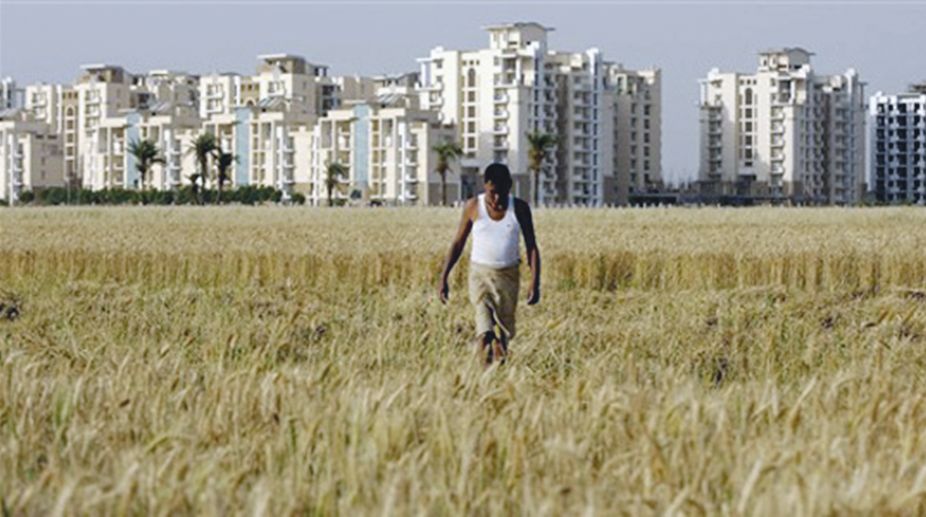What to expect
What are we going to get in this budget? People want straight and simple answers. It is not difficult to make a close-to-accurate guess if one first addresses some key questions.

Urban-rural divide (AFP PHOTO/ Manpreet)
An unfortunate aspect of our development experience has been the growing rural-urban divide. Even though many city dwellers continue to have some links with their rural homes, there is a growing feeling of urban elites getting more alienated and aloof from urgent issues concerning the majority of rural people.
While farmers’ movements and government response to them will continue to make headlines, there is need also for smaller, quieter but sustained efforts to bridge the urban-rural divide in ways which contribute to mutual understanding and a caring attitude.
Advertisement
Such an effort has been initiated recently in Odisha. This is a small effort just now but in terms of its aims and possible replication, it has great potential.
Advertisement
This effort has been initiated by a voluntary organization, Living Farms, which works at two levels – among tribal farmers of Rayagada district and urban consumers in Bhubaneswar.
Thus, this organization has the capability to tell urban consumers its rich experience of tribal ways of farming which are otherwise often misunderstood in urban areas.
The project coordinator Dr. Jagatbandhu Mahapatra says, “It is important to tell city people about the real problems and issues faced by farmers. It is important to try to bring them together on the basis of genuine understanding and empathy. This is best done in the context of issues of common and mutual interest.”
He asserts that one of the best ways of bridging the divide on a longer-term basis is to start working with school children. When Living Farms’ activists spoke to students and teachers in schools and took them to organic farms, students started telling their parents that they should buy healthy food produced by such farmers, directly from them so as to improve the family’s health and support livelihoods.
The next step is to start an organic nutrition garden in the school. Here several nutritious vegetables are grown. Excited students see the vegetables growing slowly and share some of the excitement as well as fears of the farmers regarding probability of a satisfactory crop. In this way they move a few steps closer to farmers. The concerns of farmers start becoming their concerns.
Now it is time for women’s group to move in. Their members come to school and with the help of students, prepare delicious dishes based on traditional recipes, particularly millets. Students are delighted to find that traditional foods can taste so good. They now know that both in terms of nutrition and taste traditional food, can be very inviting.
It is at this stage that they are ready to take seriously the message against junk food. Junk food has become a habit for many of them, but to take them away from this unhealthy habit, mere lectures are not adequate.
Helping them to have living contact with organic farming and farmers leads them in a more exciting way towards not just giving up junk food but also getting involved with wider health and farming issues.
Similarly Living Farms has contacted groups of women, youth and elderly citizens not only to work on healthy foods but also to seek their involvement in wider issues of farming and the food system.
A particularly strong example of someone who has tried to bridge the rural-urban divide by his inspiring work is provided by Dr. Natabar Rout, a hydro-geologist who has given up a lucrative career to set up a model farm of eco-friendly practices which shows potential of helping many farmers of the area.
As someone who came from a poor village to become a much-sought city-based professional, Dr. Rout’s decision to go back to the village to help to find a way out of farmers’ crisis is just the kind of step that is needed to bridge the urban-rural gap.
This farm called Vision Eco-Farm has been set up in Gandichapur village of Cuttack district. In a relatively short span of time it has started attracting local farmers including members of women’s self-help groups who want to look at low-cost, eco-friendly, sustainable alternatives which can rescue them from the farming crisis of expensive, ecologically destructive technologies.
They also learn new methods of successful mushroom farming. Within a short time, this eco-friendly farm has also received recognition as a Central Horticultural Experimental Centre which will enable it to provide free seedlings to villagers.
Here villagers can see examples of how waste kitchen water mixed with cow dung and urine can become a resource for supporting a nutrition garden growing over 20 varieties of vegetables and other plants including several creepers.
Several such efforts taken together can lead to a chain of cooperative initiatives involving urban as well as rural people in which they work together in creative ways to solve problems of villages as well as cities, in the process also helping to bridge the rural-urban divide.
The writer is a freelance journalist who has been involved with several social initiatives and movements.
Advertisement